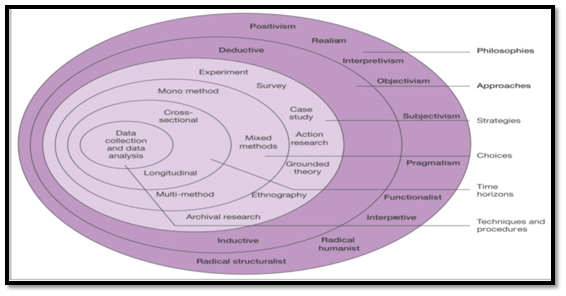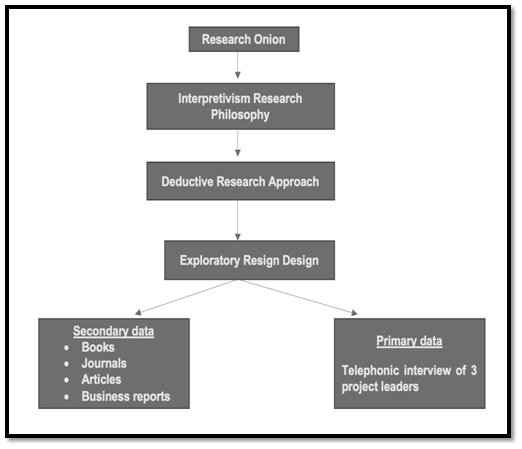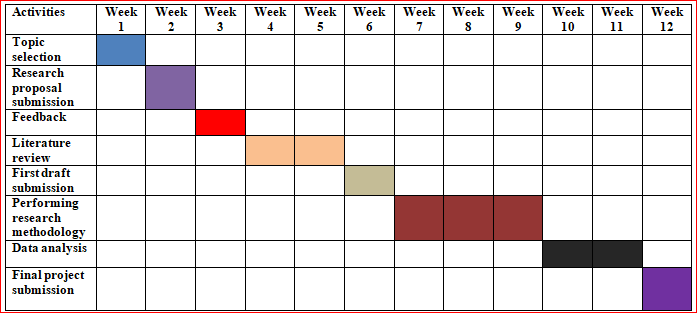Research Proposal Assignment: Significance of Project Leadership in Construction Projects
Question
Task: Prepare a research proposal assignment on analysing the significance of project leadership in the context of construction projects in Australia.
Answer
Research Objectives Outlined for Research Proposal Assignment
Considering the importance of effective leadership in different construction projects, the current study aims to address the following objectives.
- To critically evaluate how project leaders enable more sustainable workflows in construction projects.
- To explore the role of construction managers as effective leaders in Australia.
- To explore the different strategic approaches undertaken by construction leaders to improve the functions of workers in different projects.
- To understand the strategic challenges leaders, face and overcome in handling construction projects.
- To elucidate the inter-connection between project leadership and quality performance in construction projects.
Research Questions
• To what extent does project leadership contribute to the success of construction projects in Australia?
• What is the most preferred style of leadership that is solicited in construction projects?
• What are the most common approaches implemented by project leaders to improve workers’ performance in construction projects?
• What are the common challenges faced by project leaders in the construction industry and how do they overcome them?
Research Methodology
Under the strong supervision and effective guidance of leaders, construction professionals can work more diligently towards various construction projects. The need for leadership ability particularly in the construction industry is meant to strengthen the operational activities and proper utilisation of project resources to foster successful outcomes. To elucidate this, a succinct and comprehensive methodological framework will be developed as per the multi-layered model of Saunders’ Research Onion. The Research Onion provides a concise overview of how to frame the study design of a research topic by critically undergoing a few layers of methodological choices (Saunders et al., 2015). In the context of the current study, the methodological choices have been elucidated along with their individual justification to show why they most appropriate for resolving the research objectives.

Figure 1: Research Onion Framework by Saunders
(Source: Saunders et al., 2015).
Research Philosophy
The philosophical stances of research cast light on the topic based on naturalistic observations. It is mainly a belief about the way information and data about a particular phenomenon should be collected, evaluated, and used (Research-methodology.net, 2021). The term "epistemology", as opposed to "doxology", encompasses the different philosophical stances of the research approach. In this current study, an interpretivism research philosophy shall be used. As the name implies, an interpretivism philosophy enables particular research to encompass the observations derived from the social world (Ryan, 2018). Hence, it would help to critically explore the implications of project leadership in strengthening project processes in the construction industry.
Research Approach
The research approach is defined as the systematic procedures used to frame the overall study and it typically encompasses wide assumption to the narrower understanding of the research topic (Research-methodology.net, 2021). In the current study, the main purpose is to fathom the role and impact of project leadership and how it leads to operational improvement in different construction projects. Firstly, that project leadership governs multifaceted aspects of business operations and strengthen productivity is already well-known. Considering this as the defined hypothesis for the study, the approach will examine the predefined notion at its varying levels of depth to evaluate the effectiveness of the hypothesis. Therefore, a deductive research approach would be the most appropriate choice in this regard. Moreover, it will help to deduce more strategic comprehension of leadership styles and approaches that are to be integrated into construction projects.
Research Design
The research design is defined as the systematic steps or procedures used to unfold various aspects of the study that help to strengthen the existing understanding of the topic under investigation. For the current study, an exploratory research design shall be used. As the name suggests, an exploratory design would help to study and comprehend various layers of project leadership and its effectiveness on construction projects. However, an exploratory research design does not attempt to provide conclusions to the study; it unfolds data and potential information at various levels of depth to buttress the current understanding of the research problem (Pornelis, 2015). This in-depth exploration will curate relevant insights into the research topic and shall help to address the predefined study questions more effectively.
Data Collection
The data collection method encompasses the systematic gathering of data and a relevant set of information about a research topic by various means (Lobe, Morgan & Hoffman, 2020). The choice of data collection method is important as it determines the effectiveness and accuracy of the study and helps to generate valuable outcomes from the study. Although data can be valuable, too much potential information is unwieldy and therefore, the choice of appropriate data collection method is highly solicited. Typical research studies include both primary and secondary set of research activities. The secondary method of data collection encompasses information from a wide variety of secondary resources that have already been published by other researchers (Pliakas et al., 2017). On the other hand, primary data includes real-time data and information from human participation. In the context of the current study, a mixed method of data collection shall be included. Since the study is primarily interested to analyse the importance of project leadership, it does not include any numerical data. In other words, the study does not emphasize objective measurements of the data under any circumstances. As a result, the study will mainly focus on gathering qualitative data.
The secondary method of data collection includes a dataset from a plethora of textbooks, scholarly journals, peer-reviewed articles, website, and online reports of construction companies, and other theoretical sources. Specific keywords such as “leadership”, “construction management”, “Australia”, and others will be searched to obtain the most relevant articles for references. From all articles, the abstract portion will be explored in detail to acquire a brief overview of the research study. In this regard, all secondary resources must include recent publications between the year 2015 and 2021 to ensure the use of an updated and latest variety of information about construction projects. A secondary research-based dataset provides a thorough comprehension of the existing literature about project leadership and its effectiveness in ameliorating dynamic functions of construction projects.
In order to strengthen the research premise from the secondary data sources, the study additionally includes a primary method of data collection. Various forms of methods are available to gather information from primary data; in the context of the present study, a telephonic interview shall be the choice of method for the structured interview. Primary interviews are an effective way of collecting real-time information and relevant dataset from people to understand their experiences, opinions, and perceptions about a certain process or phenomenon at varying levels of depth (Rahman, 2020). This phenomenon would better help to describe how people and processes have experienced specified events related to the research topic and had unique encounters. Owing to the travel restrictions and social distancing measures amidst the ongoing global pandemic, a face-to-face interview will not be possible and hence a telephonic round of interview will be the best choice.
Sampling
To conduct the telephonic round of interview, 2-3 project leaders with over 1-2 years of professional experience in the construction sector will be selected from a small construction firm in Australia. A few open-ended questions will be asked to them about their respective experiences and perceptions on project management approaches and strategic blueprint that determine the success of construction projects. The formal consent from the chosen organization and individual participants (interviewees) should be collected before the initiation of the study.

Figure 2: Research Methodology Flowchart
(Source: Self-developed).
Analysis of data
Since the study consists only of qualitative primary and secondary data and information, a thematic analysis will be performed to evaluate the dataset. Thematic analysis, as the name implies, classifies a broad collection of data into smaller and to-the-point themes. These themes are created based on the frequency of repetitive patterns of information that commonly occur. Based on this pattern, individual codes are formed and two or more codes are combined to develop a broad and “specific” theme (Nowell et al., 2017). These themes will be explored individually to fathom the relatedness of the reported outcomes and the data generated from existing literature. Besides, the interview transcripts shall be evaluated thematically and seen for their concordance and discordance with the existing literature information. This methodological approach would help to best address the corresponding research questions. Besides, segregating the abundant data into simpler themes will provide a lot of flexibility and ease to comprehend and report the data appropriately.
Research Project Management
Project Exclusions
As stated earlier, the current pandemic situation limits a face-to-face structured interview which is one of the limitations of the study. While the telephonic interview may generate useful information, it imposes limitations on questions and responses owing to the physical absence of respondents. Secondly, the social distancing measures that are presently in vogue has to be followed which does not permit a personal interview. However, to still optimize the research design and curate effective information, the questions made will be as detailed as possible so that interviewees are obliged to respond to the interventions that serve the purpose of addressing the predefined research questions. Secondly, each telephonic round of interview will be followed by a 5-minutes additional discussion session where researchers will be asking random and impromptu questions to the respondents. This should suffice the research purpose of the present study.
Project schedules
|
Activities |
Week 1 |
Week 3 |
Week 5 |
Week 7 |
Week 9 |
Week 10 |
Week 11 |
Week 12 |
|
Selecting the topic |
? |
|
|
|
|
|
|
|
|
Finding the relevant literatures |
|
? |
|
|
|
|
|
|
|
Aim and objectives |
|
|
? |
|
|
|
|
|
|
Analysing the literature |
|
|
|
? |
|
|
|
|
|
Collection of primary data |
|
|
|
? |
? |
|
|
|
|
Analysis of data |
|
|
|
|
|
? |
|
|
|
Drawing conclusion |
|
|
|
|
|
|
? |
|
|
Final submission |
|
|
|
|
|
|
|
? |
Risk Register, analysis, and Response Strategy
Risk Register is a comprehensive document providing an accurate comprehension of certain risk factors (in numbers) and their impact that may influence the progress of the project (Xia et al., 2018). Since construction activities include various risk factors associated with the work processes, it is very important to have a strong understanding of the probable negative risks that may be encountered during the progress of the project activities. This information will help to undertake prerequisite approaches that can mitigate the severity of the risks in the project process.
|
No. |
Risk |
Probability (1 very low, 5 very high) |
Impact (1very low, 5 very high) |
Assessment (Impact x probability) |
Response Strategy |
|
1 |
Technical |
4 |
5 |
20 |
Correct installation and choice of technical facilities. |
|
2 |
Financial |
3 |
4 |
12 |
Proper budgeting before project work begins. |
|
3 |
Environmental |
4 |
4 |
16 |
Precautionary measures. |
|
4 |
Management-related |
3 |
4 |
12 |
Re-strategizing management blueprint. |
|
5 |
Socio-political |
2 |
3 |
6 |
Avoidance by novel approaches. |
|
6 |
Unknown site conditions |
3 |
5 |
15 |
Well-equipped harnesses and people support and management |
|
7 |
Safety hazards |
5 |
5 |
25 |
Effective training, work-site monitoring. |
|
8 |
Incomplete drawings |
4 |
4 |
16 |
Pre-evaluation of drawing before physical work begins on-sites |
|
9 |
Management of change orders |
4 |
4 |
16 |
Re-iteration of management policies |
|
10 |
Labour shortages |
3 |
4 |
12 |
· Fulfilment of manpower deficits before the project begins. · Task delegation based on expertise. |
Reference List
Lobe, B., Morgan, D., & Hoffman, K. A. (2020).Qualitative data collection in an era of social distancing. International Journal of Qualitative Methods, 19, 1-8.
Retrieved from: https://journals.sagepub.com/doi/abs/10.1177/1609406920937875.
Nowell, L. S., Norris, J. M., White, D. E., &Moules, N. J. (2017). Thematic analysis: Striving to meet the trustworthiness criteria. International journal of qualitative methods, 16(1), 1-17.Retrieved from: https://journals.sagepub.com/doi/abs/10.1177/1609406917733847.
Pliakas, T., Hawkesworth, S., Silverwood, R. J., Nanchahal, K., Grundy, C., Armstrong, B., ...& Lock, K. (2017). Optimising measurement of health-related characteristics of the built environment: comparing data collected by foot-based street audits, virtual street audits and routine secondary data sources. Health & place, 43, 75-84.Retrieved from: https://www.sciencedirect.com/science/article/pii/S1353829216304361.
Ponelis, S. R. (2015). Using interpretive qualitative case studies for exploratory research in doctoral studies: A case of Information Systems research in small and medium enterprises. International Journal of Doctoral Studies, 10(1), 535-550. Retrieved from: http://www.informingscience.com/ijds/Volume10/IJDSv10p535-550Ponelis0624.pdf.
Rahman, M. S. (2020). The advantages and disadvantages of using qualitative and quantitative approaches and methods in language “testing and assessment” research: A literature review., 102-112. Retrieved from: https://pearl.plymouth.ac.uk/handle/10026.1/16598.
Ryan, G. (2018). Introduction to positivism, interpretivism and critical theory. Nurse researcher, 25(4), 41-49.Retrieved from: http://oro.open.ac.uk/49591/.
Saunders, M. N., Lewis, P., Thornhill, A., & Bristow, A. (2015). Understanding research philosophy and approaches to theory development. Retrieved from: http://oro.open.ac.uk/53393/.
Xia, N., Zou, P. X., Griffin, M. A., Wang, X., &Zhong, R. (2018). Towards integrating construction risk management and stakeholder management: A systematic literature review and future research agendas. International Journal of Project Management, 36(5), 701-715. Retrieved from: https://www.sciencedirect.com/science/article/pii/S026378631731308X.
Appendices
Appendix 1: Project Schedule













